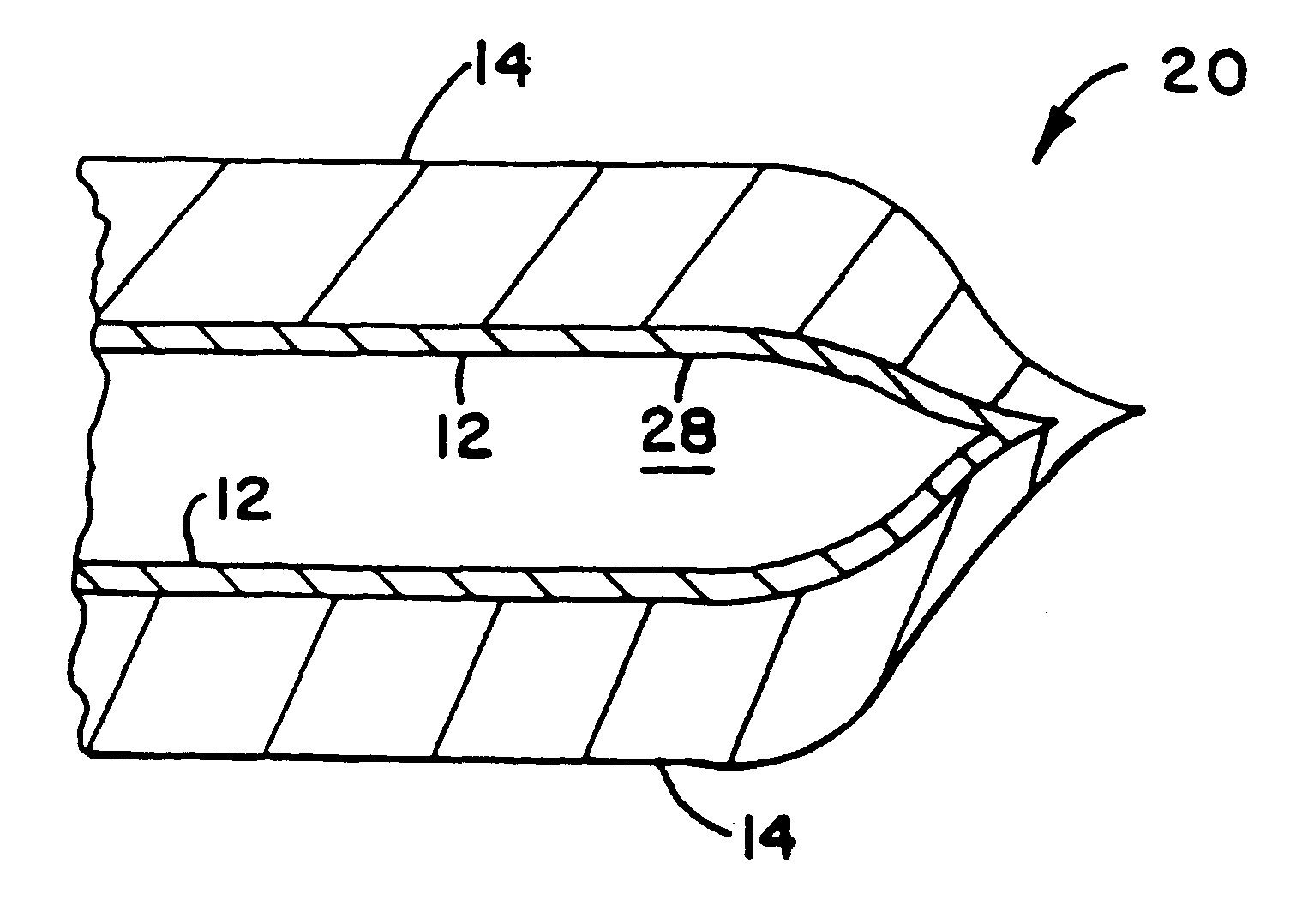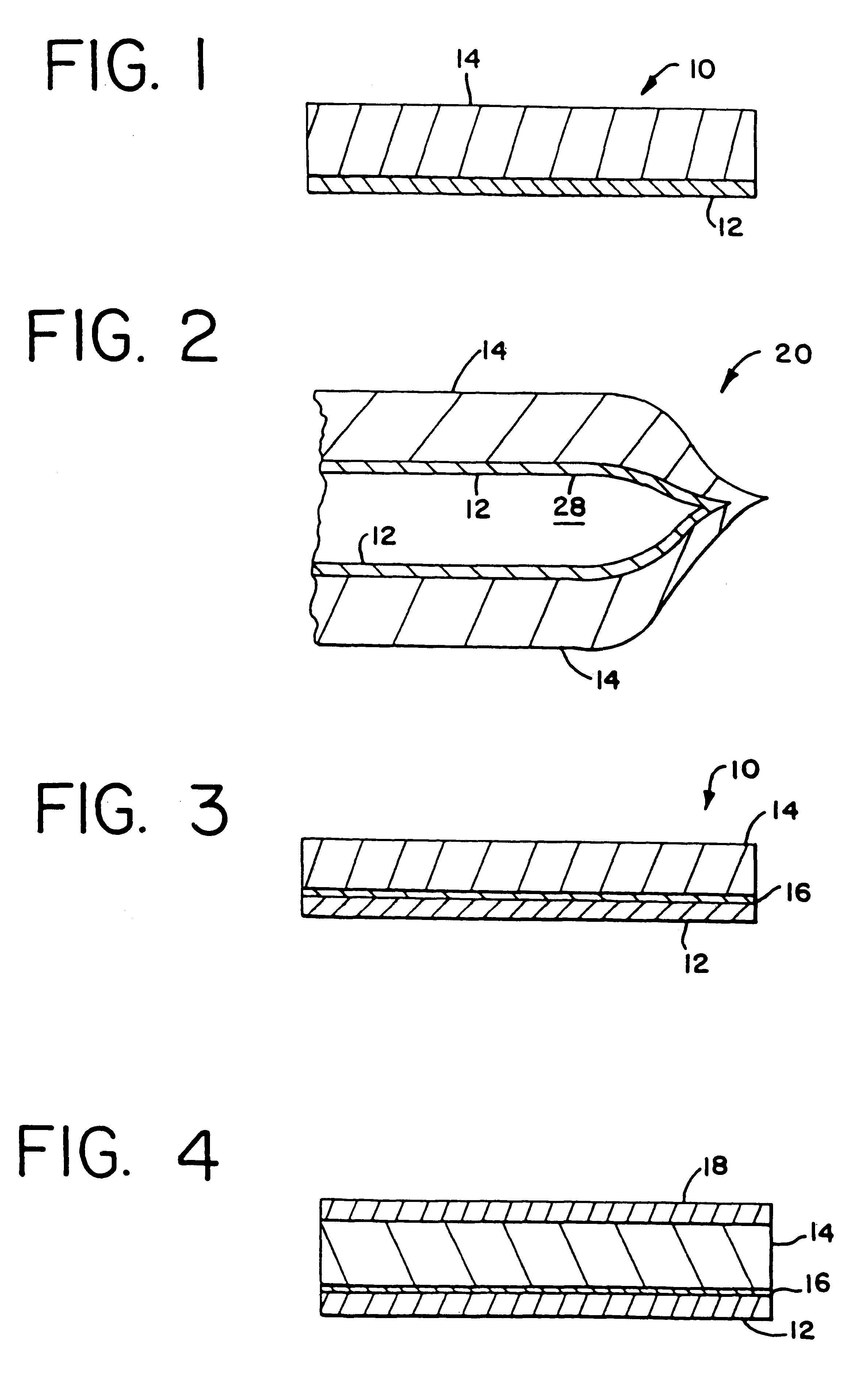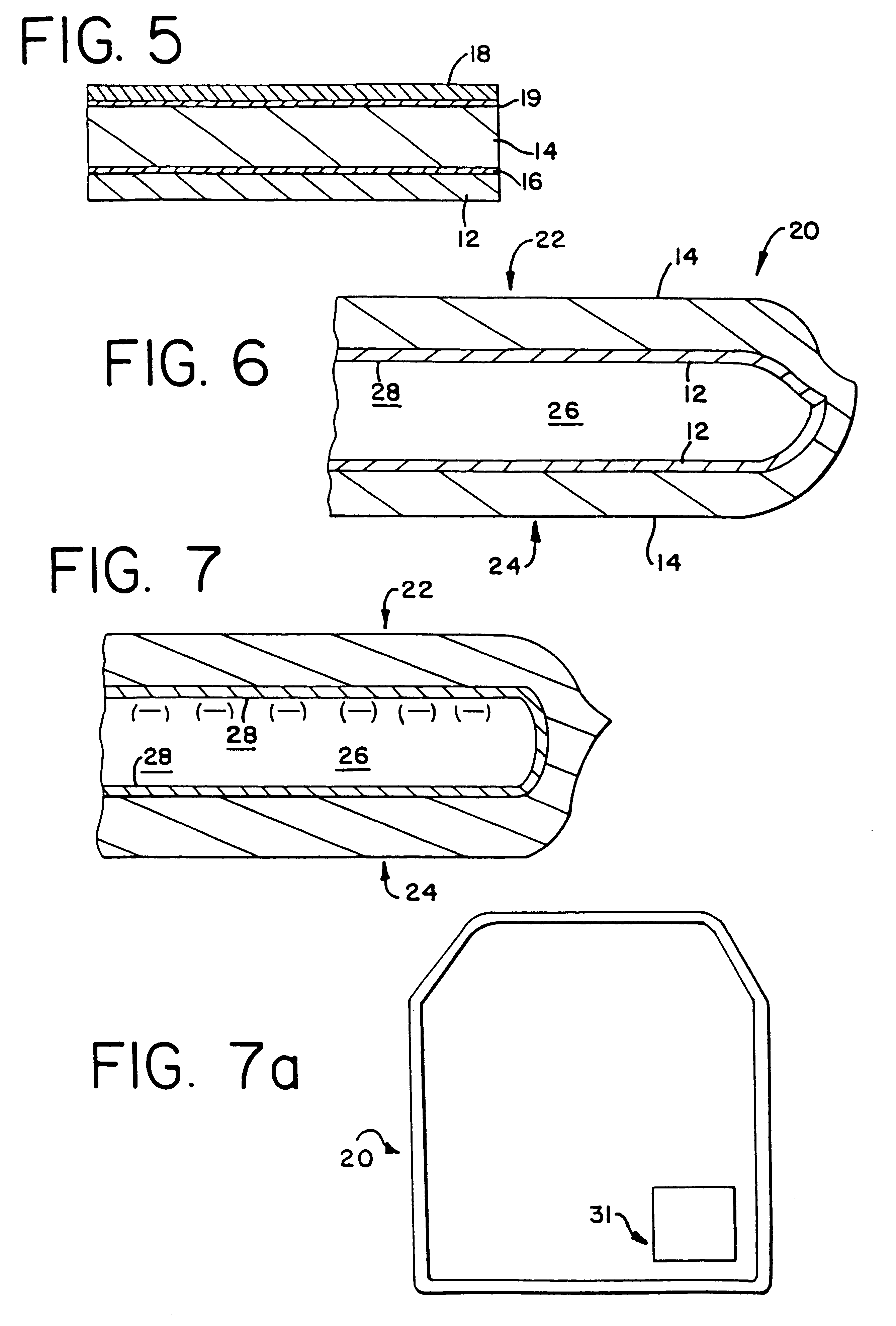Multilayer gas-permeable container for the culture of adherent and non-adherent cells
a gas-permeable container and adherent technology, applied in the field of multi-layer, coextruded film, can solve the problems of ineffective container for growing adherent cells, inability to adjust, and undesirable tendency to decay, so as to achieve optimal cell growth
- Summary
- Abstract
- Description
- Claims
- Application Information
AI Technical Summary
Benefits of technology
Problems solved by technology
Method used
Image
Examples
Embodiment Construction
A film in accordance with the present invention was coextruded from a 0.0003 inch thick layer of polystyrene (K-resin, HIPS) on a 0.0075 inch thick layer of polyolefin alloy (PL-732.RTM.). A portion of the film was corona discharge treated. The film was formed into a flexible container or bag using a heat seal process. A length of film was cut from a roll of coextruded film. Port fitments, described in the commonly assigned U.S. Pat. No. 4,327,726, which is incorporated herein by reference, were heat sealed to the film near the midpoint of the length. The film was folded across the width of the sheet, near the sealed port fitments. The folded sheet with port fitments was placed on a heated brass platen and heat sealed using a heated brass die. The die and platen were operated at a constant temperature, the die at 280.degree. F., and the platen at 370.degree. F. No chilling dies or devices were employed. After sealing the container, the container was removed from the platen and allow...
PUM
| Property | Measurement | Unit |
|---|---|---|
| Length | aaaaa | aaaaa |
| Length | aaaaa | aaaaa |
| Length | aaaaa | aaaaa |
Abstract
Description
Claims
Application Information
 Login to View More
Login to View More - R&D
- Intellectual Property
- Life Sciences
- Materials
- Tech Scout
- Unparalleled Data Quality
- Higher Quality Content
- 60% Fewer Hallucinations
Browse by: Latest US Patents, China's latest patents, Technical Efficacy Thesaurus, Application Domain, Technology Topic, Popular Technical Reports.
© 2025 PatSnap. All rights reserved.Legal|Privacy policy|Modern Slavery Act Transparency Statement|Sitemap|About US| Contact US: help@patsnap.com



